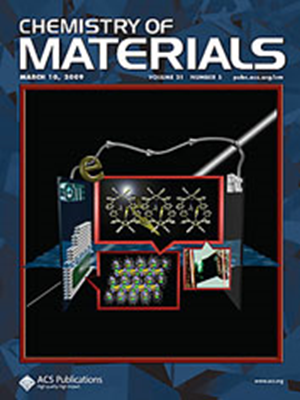聚(丙烯酸)衍生的具有水下粘附性和抗膨胀性的聚阴离子水凝胶可用作组织贴片
IF 7
2区 材料科学
Q2 CHEMISTRY, PHYSICAL
引用次数: 0
摘要
粘合性水凝胶能够自主粘合组织,为生物医学应用带来了巨大前景。然而,由于表面水化层和结构膨胀引起的界面相互作用减弱,导致粘合性能下降,水下粘合的挑战和潜在失败往往限制了它们的实际应用。为了解决这个问题,我们在此开发了一种对多种基底(尤其是生物组织)具有水下粘附性的聚齐瓦离子水凝胶。这种水凝胶被称为 PAA@QAC(20/1),是一种基于聚丙烯酸(AA)(PAA)的混合聚合物,其中包含穿插的季铵阳离子(QAC)单元,它保留并进一步超越了传统 PAA 水凝胶的性能。QAC 单元可以模拟贻贝脚蛋白(Mfps)中的阳离子氨基酸残基,取代水合层中的水分子和水合阳离子,使水凝胶通过静电和氢键相互作用牢固地粘附在表面。此外,AA 和 QAC 之间的内部静电交联增强了相分离引起的疏水性,使水凝胶在不膨胀的情况下保持其粘附特性。这些独特的特性使 PAA@QAC(20/1)能够在血液或液体存在的情况下直接、持久地粘附在一系列生物组织上,从而使其成为一种具有广泛粘附性的生物医学应用材料。本文章由计算机程序翻译,如有差异,请以英文原文为准。

Poly(acrylic acid)-Derived Zwitterionic Hydrogel Unlocking Underwater Adhesion and Swelling Resistance for Applications as a Tissue Patch
Adhesive hydrogels, capable of autonomously adhering to tissues, offer substantial promise for biomedical applications. However, their practical utility is often constrained by challenges and potential failures in underwater adhesion, owing to the weakened interfacial interactions caused by the surface hydration layer and structural swelling-induced degradation of adhesive performance. To tackle this, we developed herein a polyzwitterionic hydrogel with underwater adhesion to several substrates, particularly biological tissues. This hydrogel, termed PAA@QAC(20/1), represents a hybrid poly(acrylic acid (AA)) (PAA)-based polymer incorporating interspersed quaternary ammonium cation (QAC) units, which retains and further surpasses the performance of traditional PAA hydrogels. QAC units can mimic the cationic amino acid residues in mussel foot proteins (Mfps) by replacing water molecules and hydrated cations in the hydration layer, allowing hydrogels to adhere firmly to the surface through electrostatic and hydrogen-bond interactions. Additionally, internal electrostatic cross-linking between AA and QAC enhances the phase separation-induced hydrophobicity, enabling hydrogel to maintain its adhesive properties without swelling. These unique characteristics endow PAA@QAC(20/1) with direct and durable adhesion to a series of biological tissues in the presence of blood or fluids, making it a promising material for a wide range of adhesive-involved biomedical applications.
求助全文
通过发布文献求助,成功后即可免费获取论文全文。
去求助
来源期刊

Chemistry of Materials
工程技术-材料科学:综合
CiteScore
14.10
自引率
5.80%
发文量
929
审稿时长
1.5 months
期刊介绍:
The journal Chemistry of Materials focuses on publishing original research at the intersection of materials science and chemistry. The studies published in the journal involve chemistry as a prominent component and explore topics such as the design, synthesis, characterization, processing, understanding, and application of functional or potentially functional materials. The journal covers various areas of interest, including inorganic and organic solid-state chemistry, nanomaterials, biomaterials, thin films and polymers, and composite/hybrid materials. The journal particularly seeks papers that highlight the creation or development of innovative materials with novel optical, electrical, magnetic, catalytic, or mechanical properties. It is essential that manuscripts on these topics have a primary focus on the chemistry of materials and represent a significant advancement compared to prior research. Before external reviews are sought, submitted manuscripts undergo a review process by a minimum of two editors to ensure their appropriateness for the journal and the presence of sufficient evidence of a significant advance that will be of broad interest to the materials chemistry community.
 求助内容:
求助内容: 应助结果提醒方式:
应助结果提醒方式:


